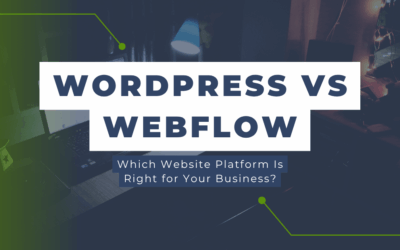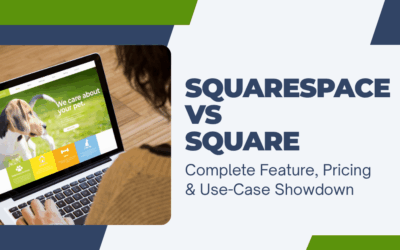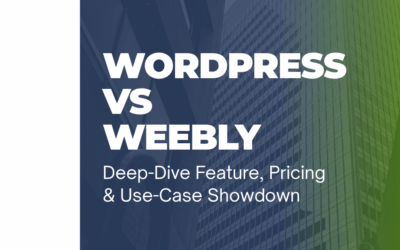Scroll depth tracking in Google Analytics 4 (GA4) has evolved beyond a simple measure of page engagement. For digital marketers, CRO specialists, and GA4 practitioners, it’s now a critical behavioral metric for understanding how users interact with content and where they disengage before converting. But while setup tutorials are everywhere, actionable strategies for analyzing scroll behavior to directly impact conversions are sorely lacking.
In this guide, we’ll bridge the gap between technical implementation and business outcomes. We’ll walk through advanced GA4 scroll depth tracking methods using Google Tag Manager (GTM), explore how to build high-impact dashboards in GA4 Explorations, and define scroll depth benchmarks that tie directly to CRO insights. Whether you’re optimizing landing pages, lead gen forms, or ecommerce flows, scroll depth can surface hidden friction points that cost conversions.
Custom GA4 Scroll Depth Setup Variants in Google Tag Manager — One-Event vs Multi-Event Models
Scroll depth tracking in GA4 via GTM can be configured in multiple ways. The two dominant implementation strategies—one-event model and multi-event model—carry different analytical implications. Choosing the right one depends on how granular you want your data and how you plan to use it for CRO decisions.
One-Event Model: Simpler, Consolidated Tracking
How it works: You fire a single scroll_depth event with a custom parameter (e.g., percent_scrolled) that holds the scroll threshold value (e.g., 25, 50, 75, 100).
Configuration Overview:
- Trigger Type: Scroll Depth Trigger in GTM
- Event Name: scroll_depth
- Event Parameters:
- percent_scrolled (Custom Dimension in GA4)
- page_path
- content_type (optional — useful for segmenting blog posts, product pages, etc.)
Pros:
- Streamlined event structure
- Easier to analyze in GA4 Explorations via parameter breakdown
- Reduces event count noise
Cons:
- Less flexibility in event-level sequencing
- Requires parameter parsing in reports
Use Case: Ideal for CRO teams looking to build funnel visualizations or heatmap-style insights from a consolidated dataset.
Multi-Event Model: Granular, Event-Level Analysis
How it works: Each scroll threshold fires a distinct event — scroll_25, scroll_50, scroll_75, and scroll_100.
Configuration Overview:
- Trigger Type: Separate Scroll Depth Triggers for each threshold
- Event Names: scroll_25, scroll_50, etc.
- Include standard parameters like page_path, page_title, etc.
Pros:
- Enables event sequencing analysis (useful for pathing and drop-off diagnostics)
- Straightforward event comparison
Cons:
- Event clutter if not managed
- Requires custom naming logic for aggregation
Use Case: Best for complex path analyses and when combining scroll data with other behavioral events (e.g., CTA clicks or form submissions).
Recommendation: For most conversion-focused use cases, the one-event model paired with robust GA4 custom dimensions delivers the best balance between clean data and analytical depth.
GA4 Explorations Examples — Building High-Impact Scroll Depth Dashboards
Once your scroll depth events are flowing into GA4, raw data alone won’t surface actionable insights. Explorations in GA4 provide the flexibility to go beyond static reports and discover the behavioral patterns driving (or blocking) conversions.
Here are three Explorations frameworks tailored to conversion optimization:
1.
Scroll Depth vs Conversion Completion Funnel
Goal: Identify how scroll depth correlates with on-page conversions (e.g., form submissions, product adds to cart)
Setup:
- Exploration Type: Funnel
- Steps:
- Session start
- Scroll thresholds (e.g., percent_scrolled = 50, 75, 100)
- Conversion event (e.g., generate_lead, purchase)
- Breakdown by: Page type or traffic source
Insight: Pinpoint optimal scroll depth thresholds that precede conversion. Use this to A/B test repositioning forms or CTAs earlier on the page.
2.
Scroll Completion Rate by Page Template
Goal: Benchmark scroll engagement across different content types or templates.
Setup:
- Exploration Type: Free-form table
- Rows: page_path or page_template
- Columns: percent_scrolled parameter values
- Values: User count or event count
Insight: Identify underperforming pages where users bail before hitting key content. Flag content length or layout issues.
3.
Segment Overlap — Scroll Completers vs Non-Converters
Goal: Understand if high-scroll users are converting—or just consuming.
Setup:
- Exploration Type: Segment Overlap
- Segments:
- Users with scroll_depth = 100
- Users with conversion_event
- Users without conversion
- Visualize the overlap
Insight: A large group of high-scroll non-converters may indicate poor CTA placement, weak offers, or UX friction after content consumption.
Benchmarking Scroll Depth — Interpreting Engagement for CRO
Scroll depth is only useful when tied to benchmarks that indicate actionable friction. While benchmarks vary by industry and content type, the following ranges provide a starting point for interpreting scroll behavior:
| Scroll Threshold | Benchmark Engagement Rate | Interpretation |
|---|---|---|
| 25% | 85–95% | Normal entry activity |
| 50% | 60–75% | Indicates strong above-the-fold content |
| 75% | 35–50% | Content retains user interest |
| 100% | 10–30% | Signals deep engagement |
CRO Implications:
- If conversions are occurring primarily from users who only reach 50%, place CTAs higher on the page.
- A high 100% scroll rate with low conversions suggests a compelling narrative but a weak or mistimed CTA.
- A large drop-off between 50% and 75% implies content fatigue or visual distraction — test content compression or reordering.
Use these benchmarks alongside heatmaps and session replays to triangulate the full story behind behavioral drop-offs.
Bridging Implementation with Impact — Turning Scroll Data into Conversions
Advanced scroll depth tracking in GA4 is no longer a technical checkbox. When implemented and analyzed correctly, it reveals friction in content structure, messaging, and UX that can block conversions. The key is moving from raw event data to behavioral insights:
- Choose the right GTM model based on analytical goals
- Use GA4 Explorations to visualize scroll behavior against conversion paths
- Benchmark engagement to diagnose and prioritize optimizations
Practitioners who master this analytical leap stand to unlock a deeper understanding of user intent and engagement — and translate it into measurable business results.
For teams ready to go beyond standard reports, integrating scroll depth with multi-touch attribution, landing page testing, or dynamic personalization strategies is the next frontier. If you’re looking to scale this with expert-level guidance or tools, our analytics consulting team can help you operationalize these insights across your digital experience stack.



